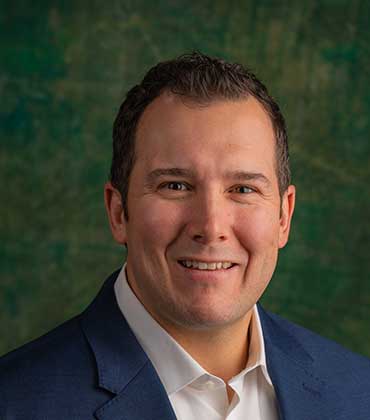Recovering from Heroin Addiction
Heroin addiction is a serious problem that devastates many lives in the United States and beyond each year. Heroin addiction can often develop quickly and has devastating consequences. In fact, heroin addiction can jeopardize relationships, financial security, and professional prospects. Criminal activities and legal issues are common with heroin addicts. More than that, heroin use can damage health and even lead to fatalities. If you are addicted to heroin, rest assured that help is available. Many people have overcome their addiction to heroin with professional assistance.
How Does a Heroin Addiction Develop?
Morphine is naturally extracted from several different types of poppy plants, which are native to areas in Central America and southern Asia. Heroin is processed from morphine. This opioid, available in powders and sticky substances, is highly addictive. In fact, it binds to neural receptors in the brain quickly. By doing so, it stimulates dopamine production. Dopamine is a pleasure-inducing chemical. Also, it blocks pain receptors and is often sought out for pain management.
The binding process occurs rapidly, so heroin users often describe feeling a pleasant rush. However, other side effects soon follow. These include mental fogginess, dry mouth, vomiting, reduced heart function, and slowed breathing. In some cases, the side effects are so severe that a coma, brain damage, and even death can occur. From the first use, these risks are present.
The initial pleasure experienced through heroin use and the changes to the brain even after the first use can lead to intense cravings and withdrawal symptoms. With continued use, tolerance can build. In turn, this results in the need to use more heroin to enjoy the same feelings. Heroin addiction can develop after only a few uses. Withdrawal symptoms can occur in only a few hours, so the desire to continue using happens quickly. Symptoms can last up to 48 hours. However, they can last for months for some users. Withdrawal symptoms include insomnia, muscle aches, cold flashes, and more. These symptoms lead to a strong desire to continue using heroin. As a result, an addiction cycle is perpetuated.
The Prevalence of Heroin Addition
The overall incidence of heroin addiction in the U.S. is relatively low compared to other substances, but the number of addicts and new annual users is mind-boggling. In fact, the National Vital Statistics System of the CDC revealed a startling statistic in a recent survey. Almost 20% of overdose deaths in the U.S. were related to heroin use in 2019. This illustrates the dangerous risks associated with heroin use.
The National Survey on Drug Use and Abuse also researched the prevalence of heroin use. Specifically, it looked at heroin use of those aged 12 and older between 2002 and 2012. The survey indicated an increase in heroin use by more than 200,000 people during this time period. Also according to the survey, the largest increase in usage occurred in those between 18 and 25 years of age. In addition, the number of new users has increased at an alarming rate. In 2006, 90,000 people started using heroin. In 2012, the number of new users rose to 156,000. This expresses an increasing number of new users and a growing issue.
There is one spot of hope, however. The survey reveals that new heroin usage declined in children and teens. In fact, it is at the lowest level since the survey began. Fewer than 1% of teens in 10th through 12th grades started using heroin between 2005 and 2013.
Recovering From a Heroin Addiction
Given the severe effects of heroin addiction, many addicts find it difficult to quit using on their own. In fact, the number of people between 18 and 25 who sought heroin addiction treatment increased to 26% in 2012 from 11% in 2008. Several effective heroin addiction treatments are available through recovery programs. Often, these treatments are combined together for a more comprehensive approach. They normalize brain function and improve addictive behaviors.
Pharmacological Treatments
Pharmacological treatments directly ease the cravings and withdrawal symptoms associated with quitting heroin use. The pain, nausea and other symptoms from heroin withdrawal can be severe. This results in a strong desire for addicts to find relief through continued use. Medications can improve treatment program retention, decrease drug use and alleviate withdrawal symptoms.
Medications target the brain receptors in the same way as heroin does. These medications are broken into three categories. Agonist medications trigger these receptors. Partial agonist drugs have the same response but to a lesser degree. Antagonist drugs are receptor blockers. They reduce the pleasure rush associated with heroin use so that the benefit of using is reduced. Some of the medications that doctors recommend for heroin addiction treatment are:
- Methadone, which may also be called Methadose or Dolophine
- Buprenorphine, also known as Suboxone or Subutex
- Naltrexone, also called Revia, Vivitrol or Depade
Behavioral Therapy
Behavioral therapies are available in both residential treatment centers and outpatient treatment programs. These include cognitive behavioral therapy and contingency management. The specific treatment used is based on the patient’s specific needs. These treatments may be used together and combined with medications in some cases.
Cognitive behavioral therapy improves an addict’s stress-coping skills. In addition, it adjusts an addict’s behaviors that contribute to heroin use. It also changes the expectations associated with drug use. On the other hand, contingency management is a rewards-based treatment option. Individuals receive reward points for each negative drug test. These points are redeemable for special prizes as encouragement for making healthy choices.
Quitting Heroin Success Rate

With even one use, a person has up to a 60% chance of becoming addicted. The risk doubles for users between 18 and 25 years old as their older counterparts. However, there is good news. The quitting heroin success rate indicates that professional treatment can decrease the chance of a relapse. Specifically, those who complete a 30-day treatment program or longer have an increased chance of staying sober.
Many people start using heroin as a means of pain management. In fact, of those in recovery, 90% indicated that heroin was cheaper and easier to obtain than prescription painkillers. In a treatment program, pain management can be addressed properly. This can reduce the risk of a relapse.
Causes of Heroin Use Relapses
Unfortunately, the risk of relapse is higher with heroin than with most other drugs. One reason for this is the impact of heroin on the brain. Heroin changes how the user responds to stress, makes decisions and behaves. To overcome an addiction, the individual must counter these changes. While making these changes alone is difficult, the behavioral treatments available directly support this. At the same time, the medications prescribed in recovery manage withdrawal symptoms.
Be aware that a relapse could occur years later. An individual who completes a recovery treatment program successfully must make a regular effort to maintain sobriety. This includes using coping mechanisms and making healthy decisions. In addition, continued therapy and attendance at support groups is helpful for many people.
Learn More About Heroin Addiction Treatment Today
While a heroin addiction can be difficult to break, help is available. Jaywalker offers a supportive community with a team of compassionate, experienced experts. Specifically, it integrates a 12-step program with a variety of activities and programs to support the successful transition to a healthy lifestyle.
Our 90-day rehab for men is in a beautiful setting in the Rocky Mountains. Contact Jaywalker today to learn more about the program.




